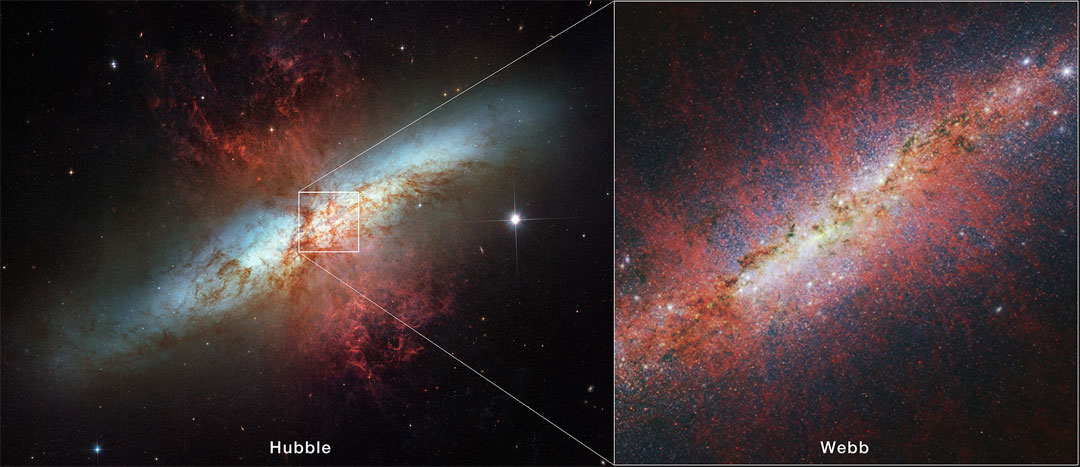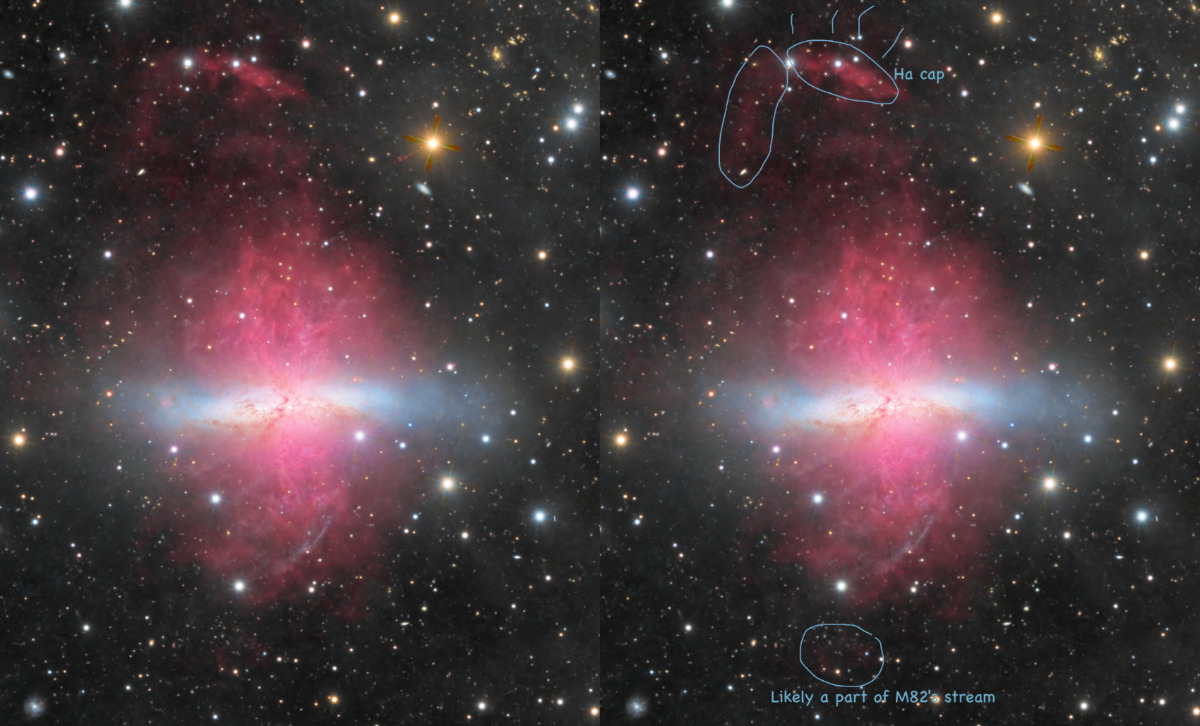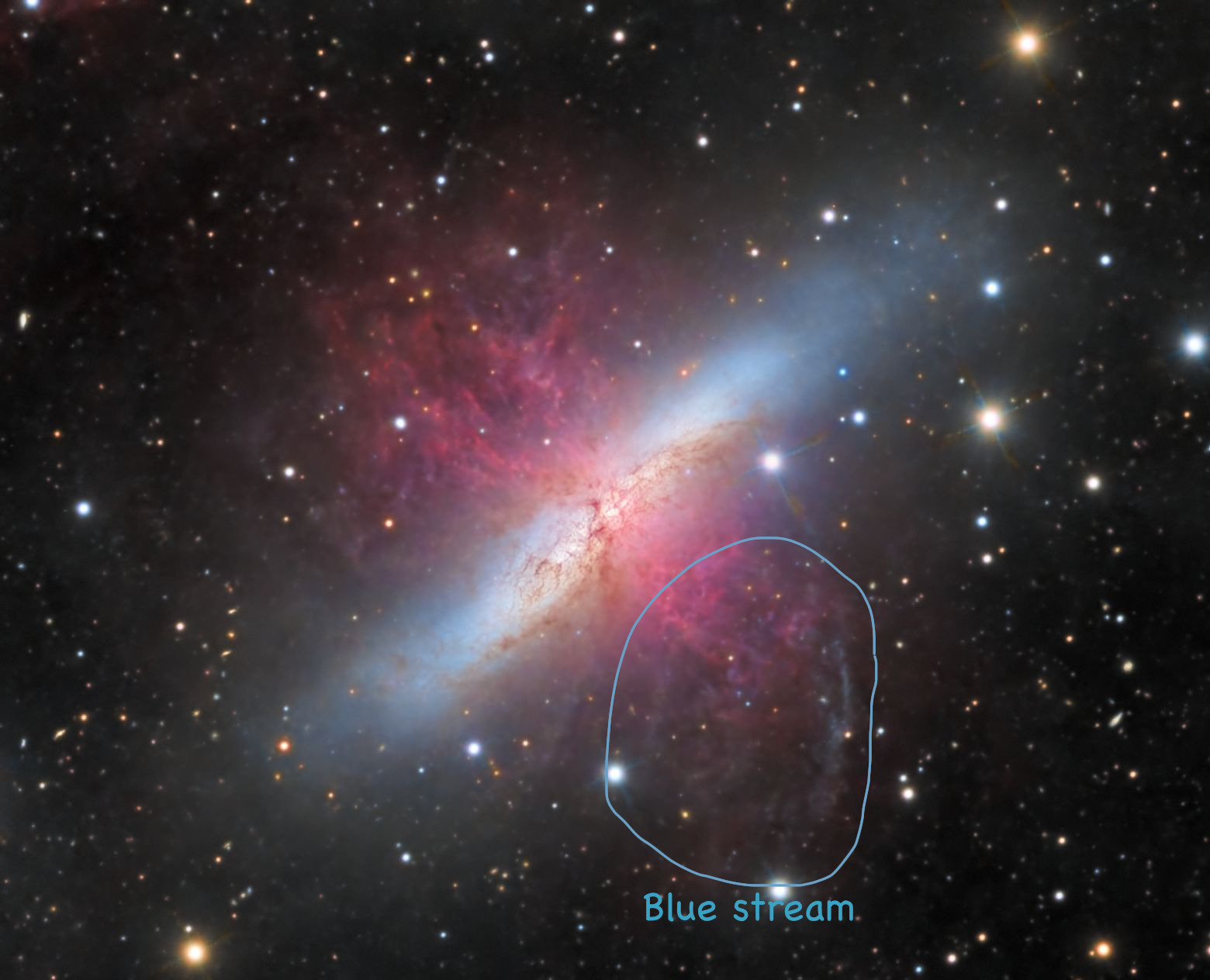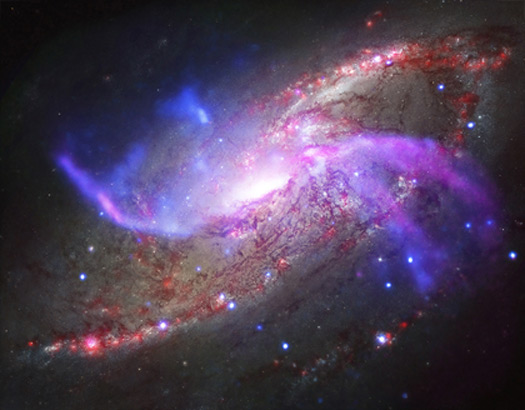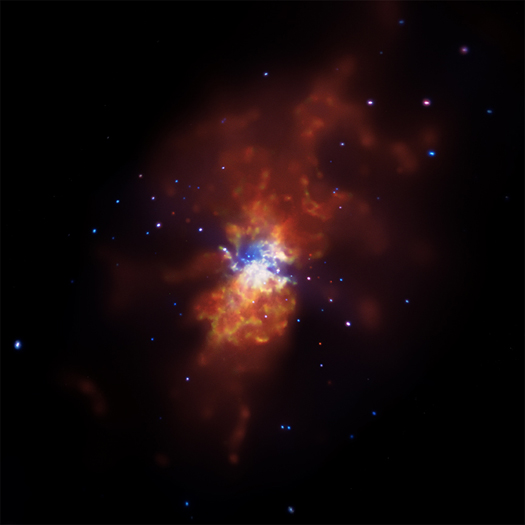Ann wrote: ↑Mon Apr 15, 2024 12:10 pm
Locutus76 wrote: ↑Mon Apr 15, 2024 10:23 am
alex555 wrote: ↑Mon Apr 15, 2024 7:49 am
There is, in the upper right part of the Webb image, something that looks like a globular cluster and which is completely invisible in the Hubble image. Impressive.
Alex
Interesting… not even the enlarged Hubble image is sharp or detailed enough for me to notice any individual clusters, especially around the part that Webb zoomed in on. But maybe that’s just me. Are you sure you aren’t comparing Hubble’s entire image to the close up from Webb?
M82 is a very dusty galaxy. It is almost four magnitudes brighter in the far infrared than at blue wavelengths. Only very dusty galaxies show such a discrepancy between far infrared and blue wavelengths.
Because M82 is so dusty, Hubble simply can't peer inside. Here is Hubble's best effort (from 2001, and I don't know if Hubble revisited it):
A violent starburst is going on in the center of M82. JWST can peer through the dusty heart of the Cigar Galaxy and see clusters of stars inside:
The Hubble image shows M82 in its entirety (well, mostly), whereas the JWST image only shows the center of M82. All the bright white dots in the JWST image are star clusters, and the fainter dots are most likely individual stars. (Well, admittedly, there is a lonely-looking elongated white thing below center right that looks like a galaxy to me.)
APOD Robot wrote:
Although this starburst galaxy was surely stirred up by a recent pass near its neighbor, large spiral galaxy M81, this doesn't fully explain the source of the red-glowing outwardly expanding gas and dust. Evidence indicates that this material is being driven out by the combined emerging particle winds of many stars, together creating a galactic superwind.
Surely a number of supernovas popping off must have added to this superwind?
Ann
ThanX Ann
You may also know the great Deep Sky Collective:
Carl Björk - @Palmito, Thomas Bähnck - newhorizonobs (instagram), Oliver Carter - @Oliver Carter, Sascha Frei - @Usernamealreadytaken, Jake Gentillon - @jake_g, Richard Hall - @Richard, Tino Heuberger - @RononDex, Jason Jacks - @jmdl101, Travis Lecture - @SpaceIsWhack, Brian Meyers - @Brian M., Oskari Nikkinen - @Oskari Nikkinen, William Ostling - @William Ostling, Prashant Ranganath - @Prashant Ranganath, Tim Schaeffer - @Tim Schaeffer, Mark Shelton - @MARK Shelton, Felix Schöfbänker - @SomeAstroStuff and Berengar von Ow
Starting in February we had 6 people in the group, but the number quickly rose to now 17 people: 1 Editor, 1 person who gave us his Bortle 1 data for MSGR, and 15 photographers. By mid-April we had 173h 34min of broadband data and 243h 04min of Ha data which had us confident in realizing our goal. With 416h 38min of total integration gathered on the target, of which 393h 10min (or over 16 days) were effectively used, this also marks the longest integration time ever on M81/82, and the longest one-panel integration time on Astrobin!
What a worthy APOD for the future!
The whole story:
https://www.astrobin.com/tb0sou/
ZOOM:
https://theuberger.ch/post/astrophotogr ... 82-collab/
Source:
https://theuberger.ch/post/astrophotogr ... 82-collab/ The Cigar Galaxy from Hubble and Webb
The Cigar Galaxy from Hubble and Webb
